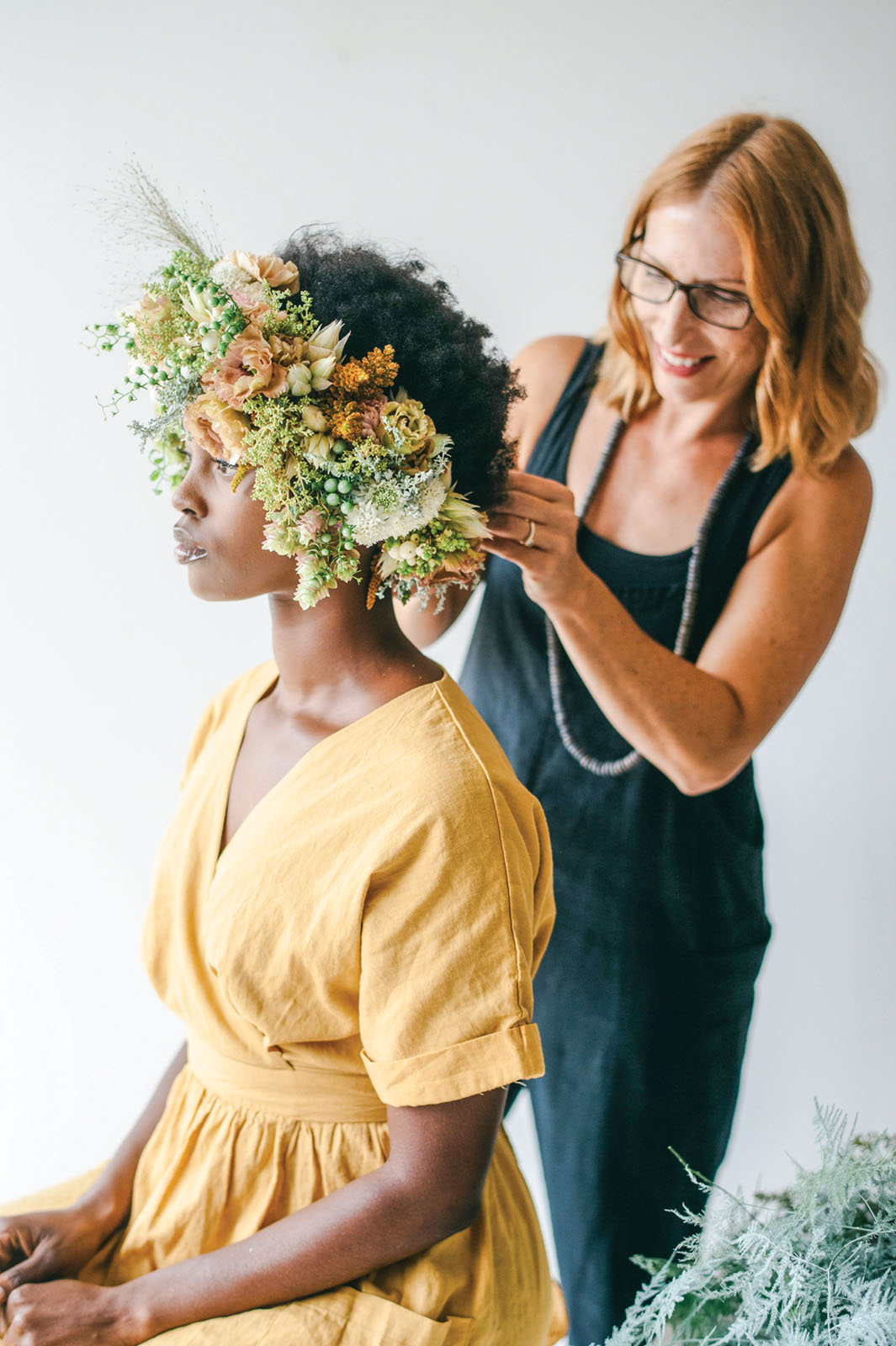
Susan McLeary, author of The Art of Wearable Flowers, fitting a floral crown
Materials that have unreliable or bulky stems can be individually wired into designs. Wiring replaces the stem of the floral material with a slim but strong bendable wire, which gives the designer more control of the materials. Wired stems can defy gravity and create strong but light and airy designs.
There are quite a few wiring techniques; following, I’ve described the four I use most frequently. When wiring, I typically work with 24- or 26-gauge floral wire, cut in half.
Note: Use these techniques to make Susan’s Wired Floral Cuff, featured in the September/October 2021 issue of Flower magazine.
PIERCING
Also called cross-piercing, this technique is best for flowers with sturdy stems, such as roses, lisianthus, and carnations. Using a 24-gauge floral wire, pierce the stem of the flower, just below the calyx. (For large or heavy blooms, insert another wire just below the first.) Bend the wire ends down to meet the natural stem, and trim the natural stem to about 1 in (2.5 cm) long. Tightly secure stem wrap just below the calyx, and pulling the tape taut, tape the entire length of the wire/stem bundle with the stem wrap.

Wiring a flower stem using the piercing method - Step 1
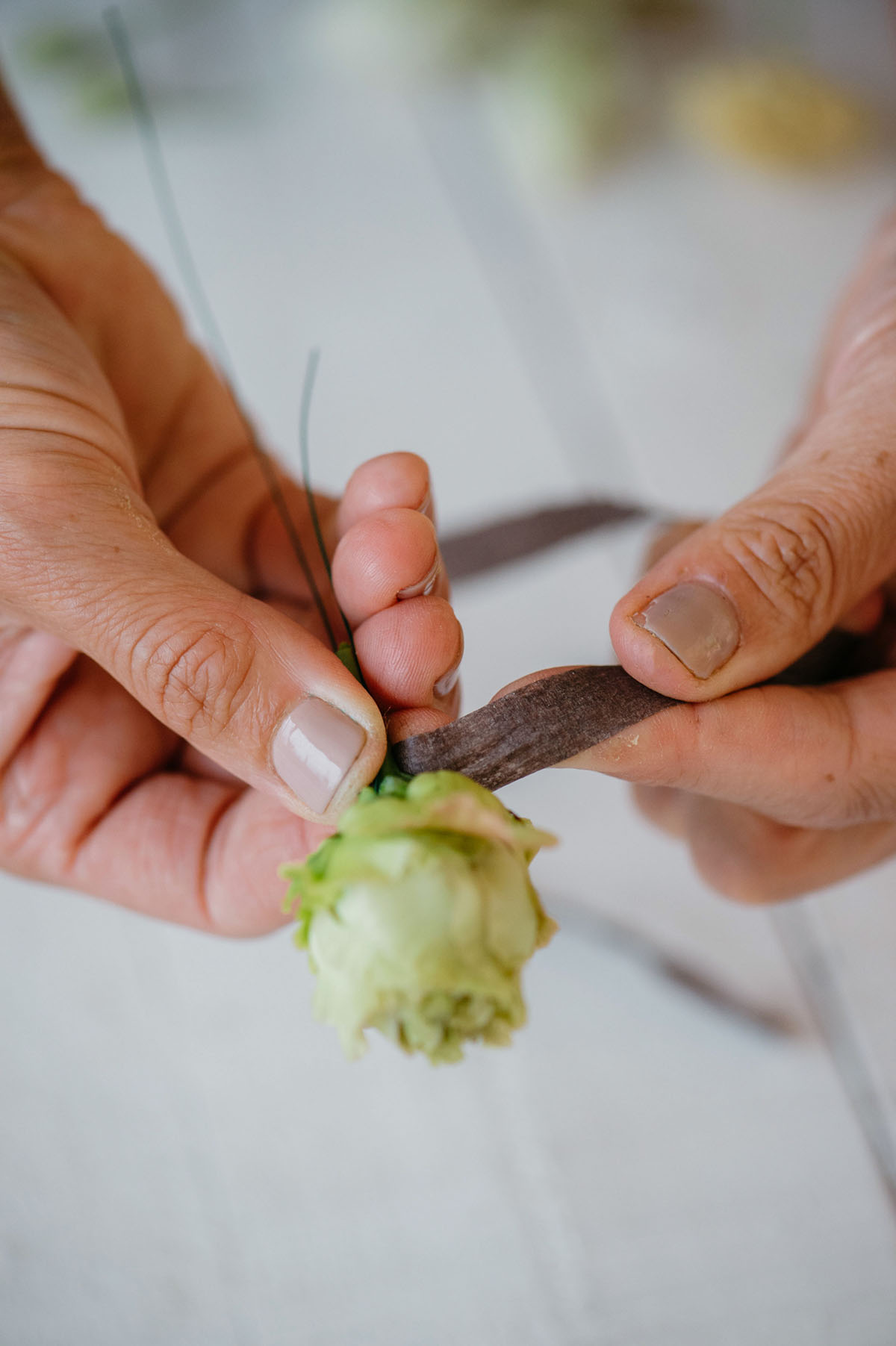
Step 2
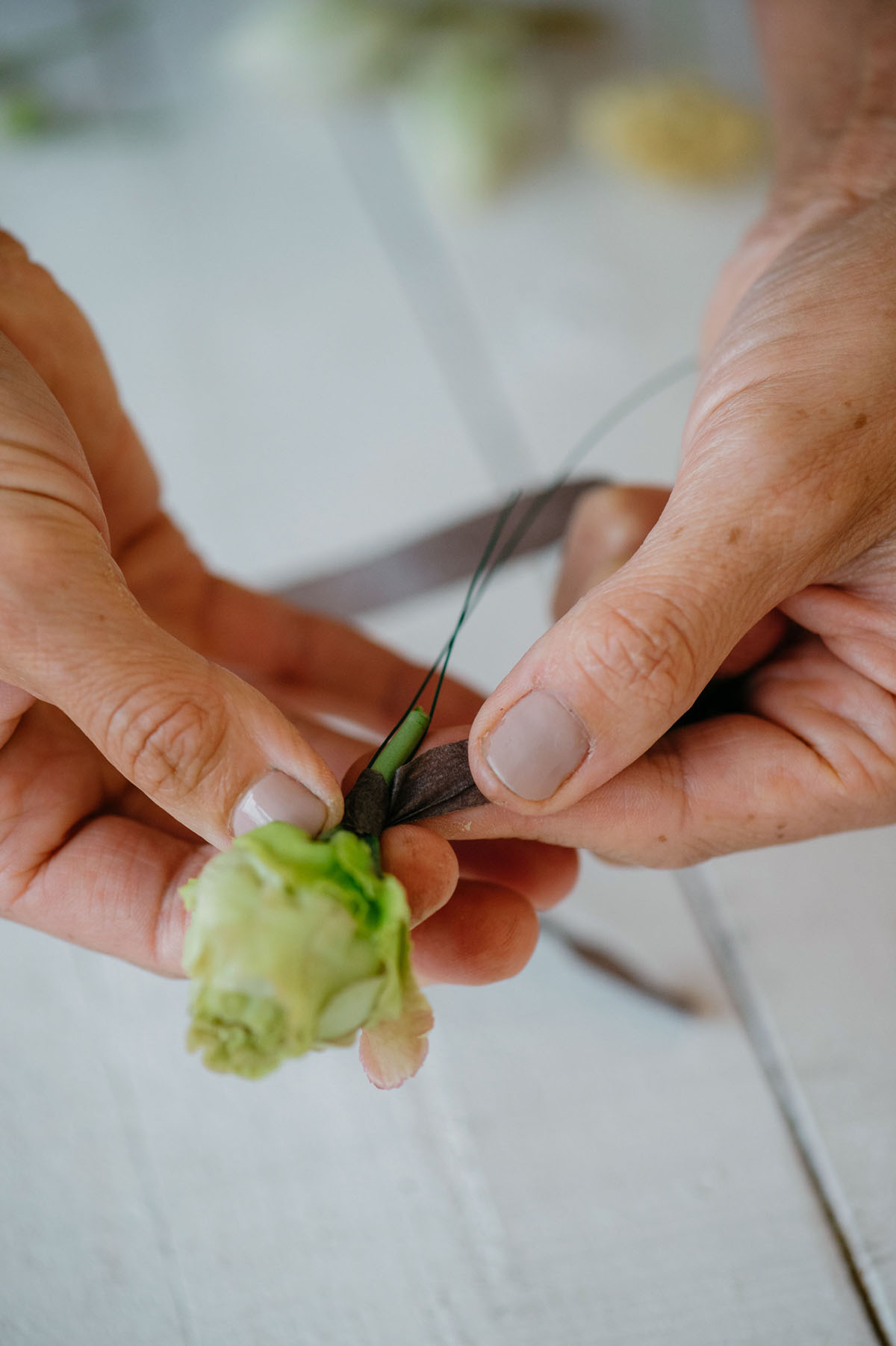
Step 3
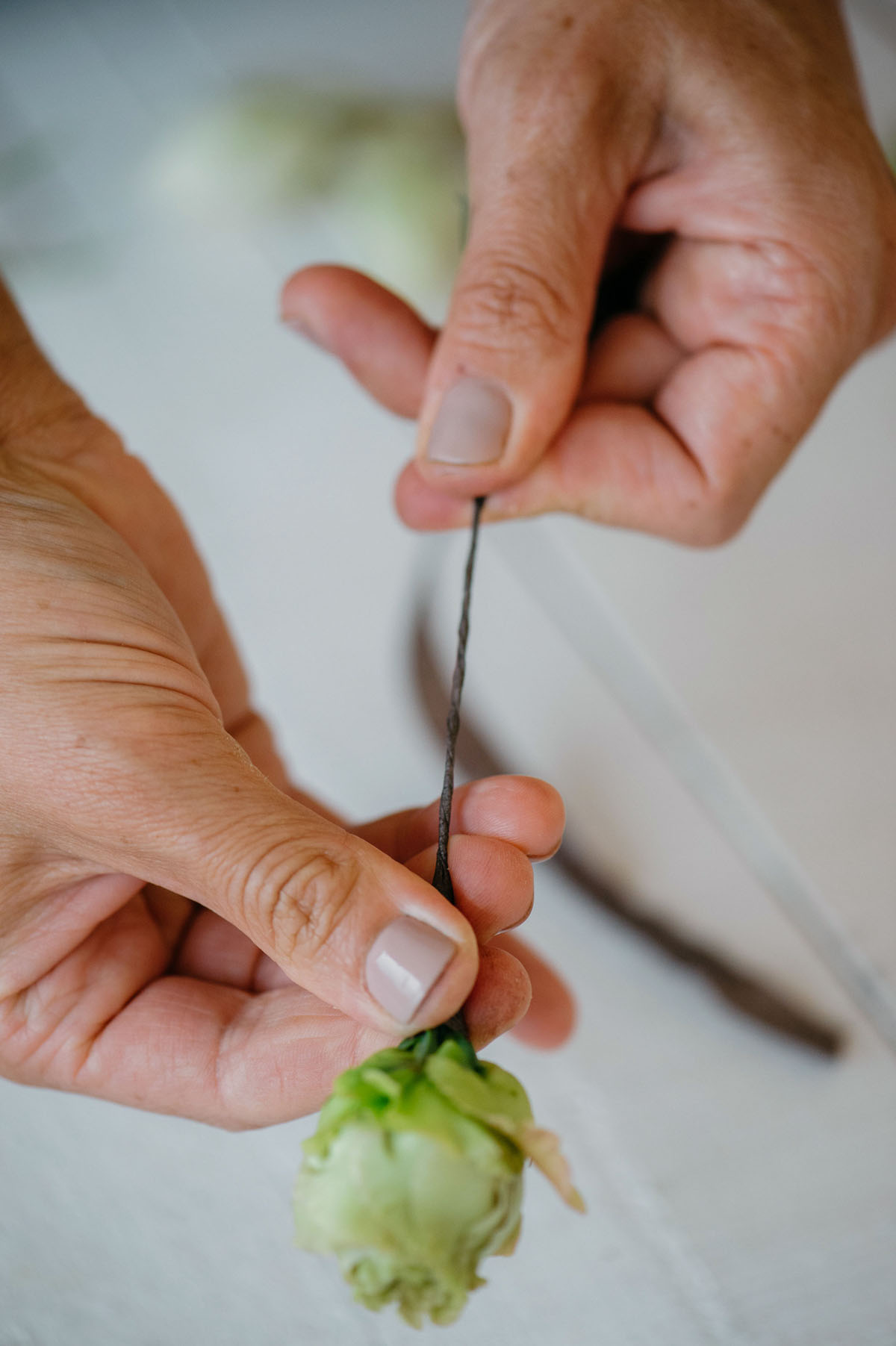
Step 4
INSERTION
This method is best used with materials that have slim but durable stems and firm heads, such as scabiosa blooms and pods, berries, and strawflowers. Cut the stem of the floral material to about 1 in (2.5 cm) long. Place a 24- or 26-gauge floral wire next to the stem of the floral material, and insert one end into the bloom head. Grasp the natural stem and wire between your fingers, and firmly tape with stem wrap tape.
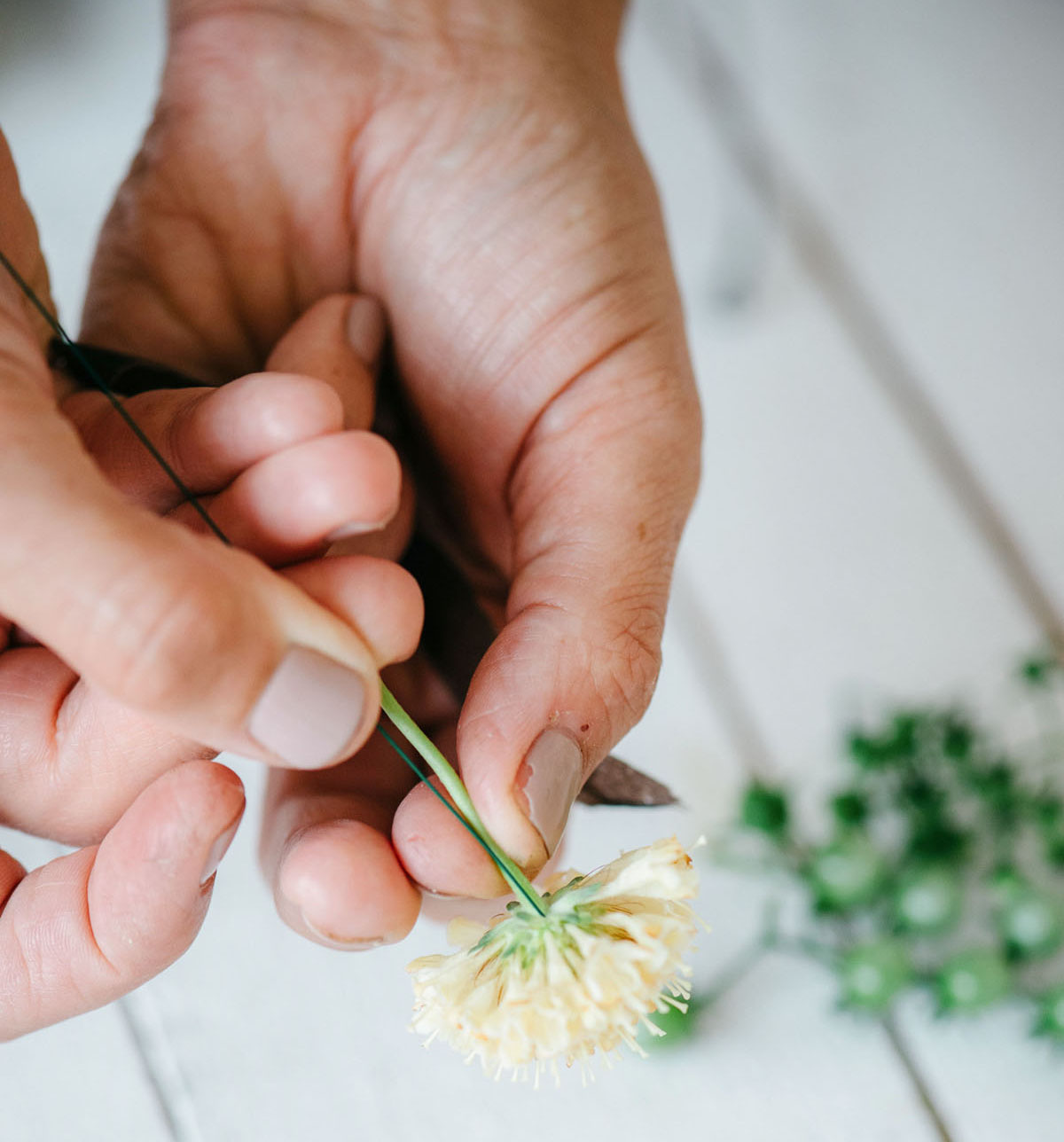
Wiring a flower stem using the insertion method
CRANKING
This technique provides a reliable way to secure groupings of small florets, berries, herbs, or petals. I often wire clusters of carnation petals, grouped stems of privet, and agapanthus florets. Soft, fleshy stems must be gathered and wrapped in stem wrap tape first to prevent damage by the wire. Firm, leathery, or woody stems do not require pretaping. To wire, gather the bundle in one hand, fold a 24- or 26-gauge wire over the bundle just below the bloom head, grasp one end of the wire, and “crank” it around the bundle two or three times until it feels securely attached. Bring the two ends of the wire down, and wrap the entire “stem” with stem wrap tape.

Wiring flower stems using the cranking method - Step 1
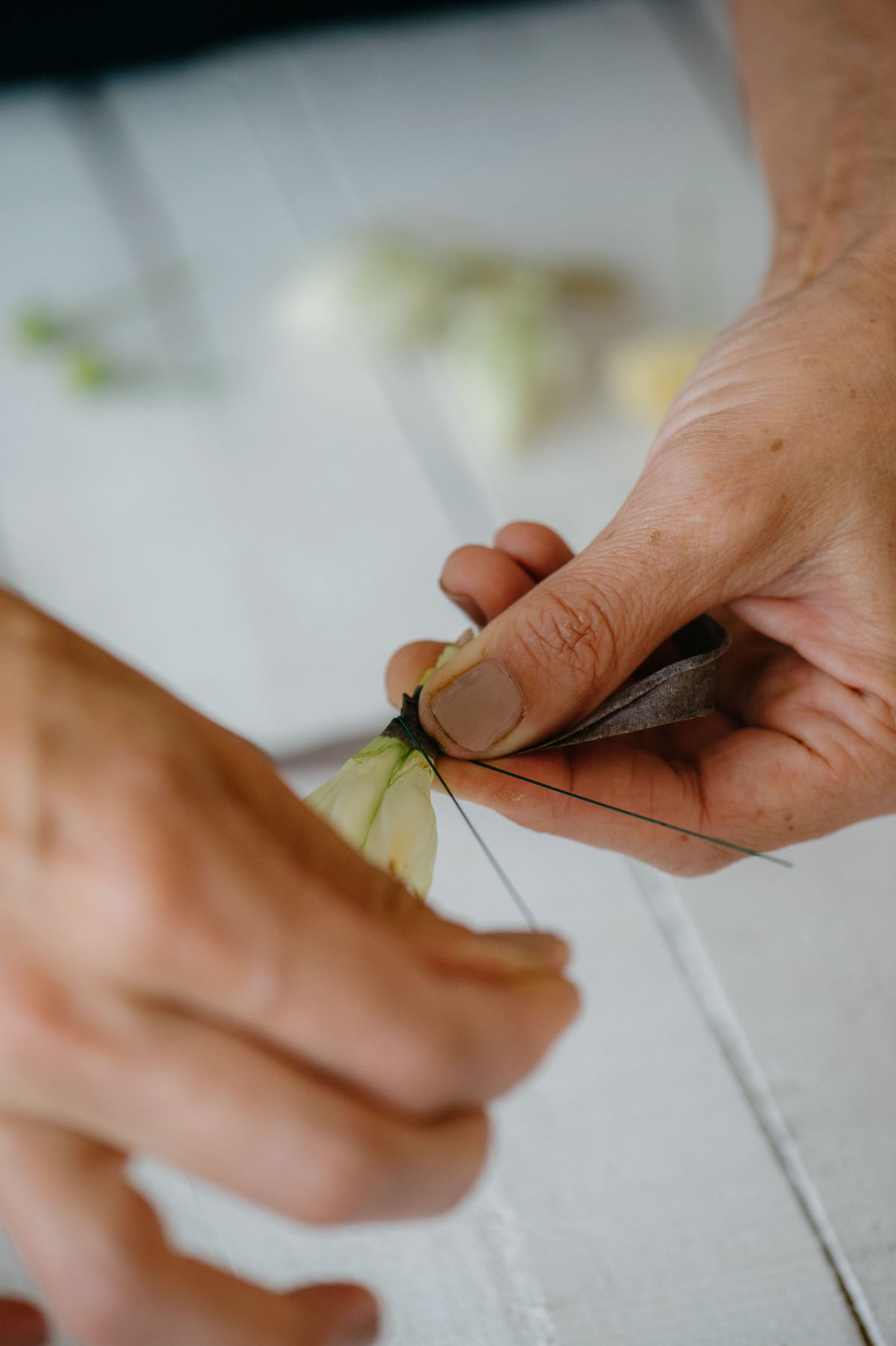
Step 2
HOOK
This technique works wonderfully with disk-shaped and flat flowers, such as ranunculus, chrysanthemum, and firm, tightly structured succulents. To wire, first trim the stem of the floral material to about 1 in (2.5 cm) long. Next, bend one end of the wire to form a narrow “U” shape. Sink the long end of the wire into the bloom, and guide it down until the U-shaped portion meets the surface of the bloom. Lifting petals as needed, guide the shorter end of the wire through the surface of the bloom as well, until the U-shaped “hook” is fully embedded and disappears into the bloom head. Both ends of the wire will appear below the bloom head. Pinch the wires and stem together, and secure with stem wrap tape.

Wiring a succulent stem using the hook method - Step 1
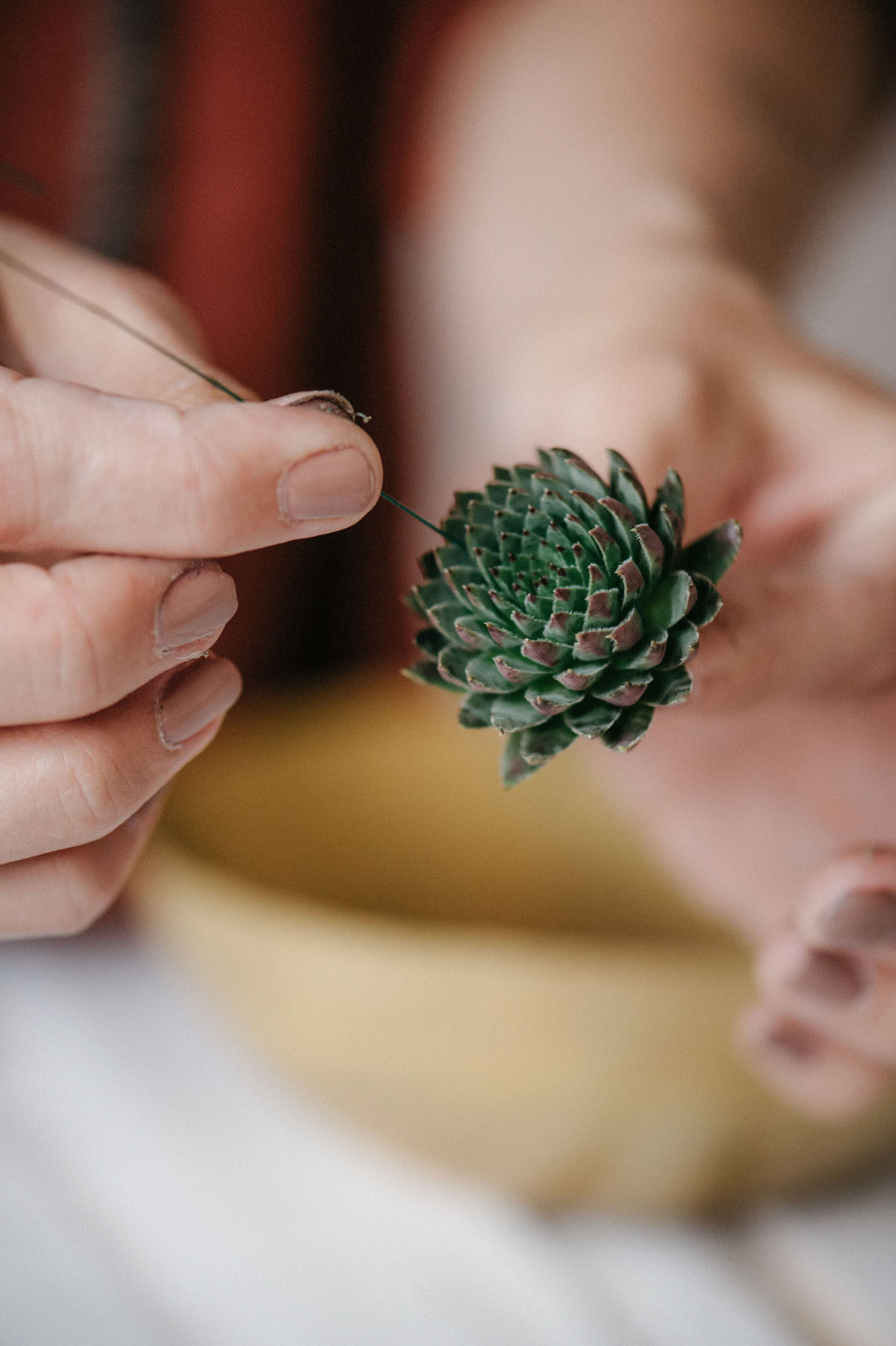
Step 2
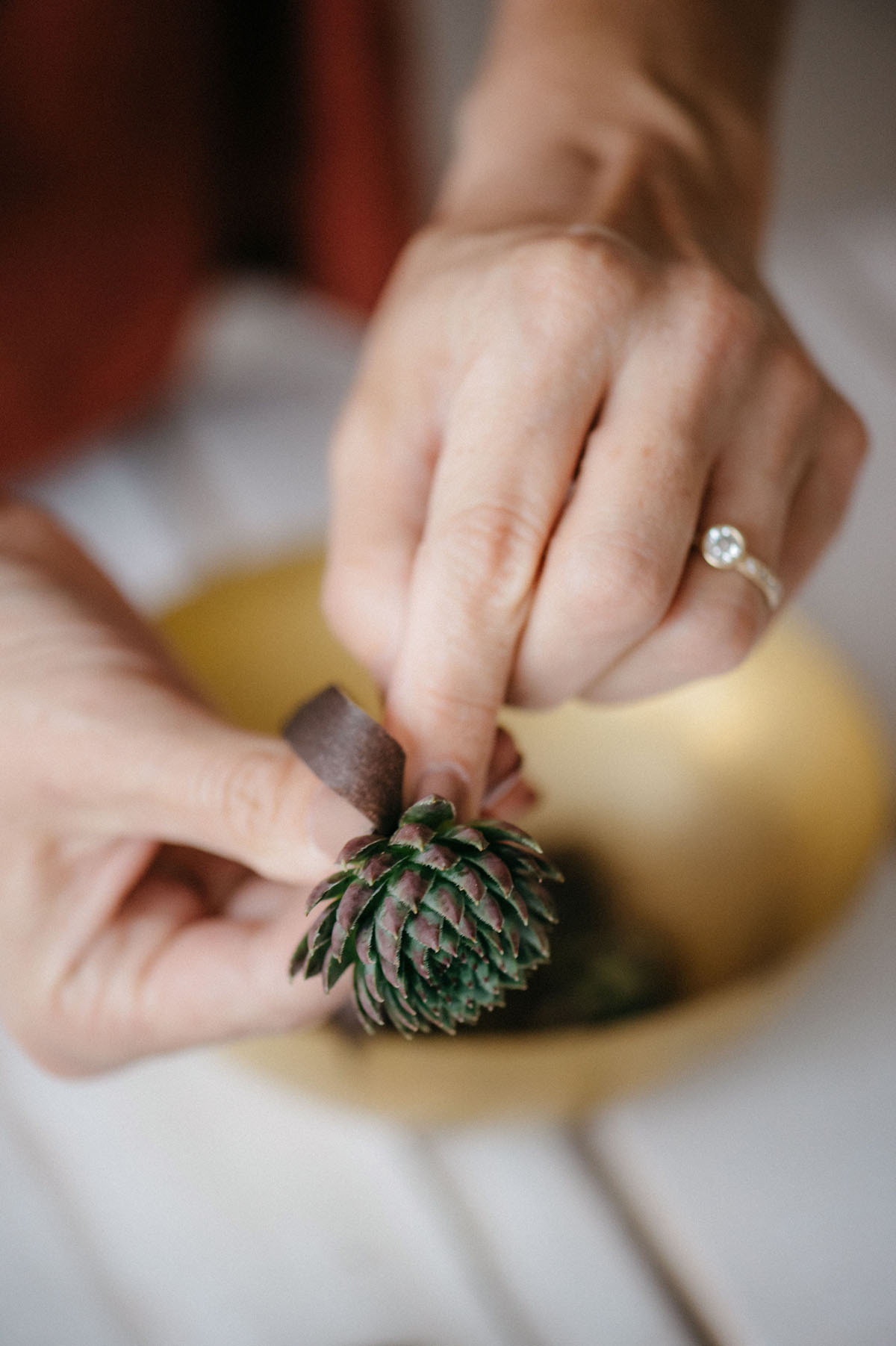
Step 3

Step 4





